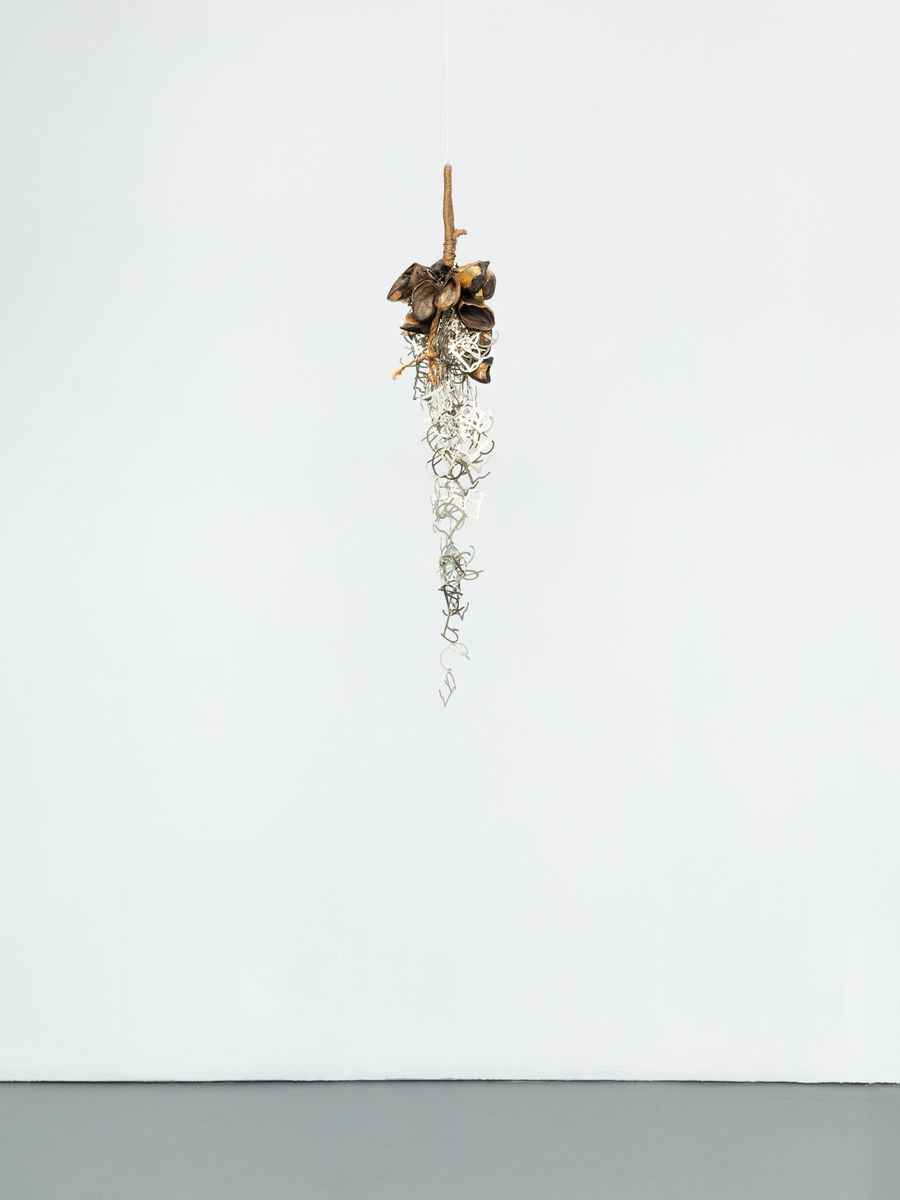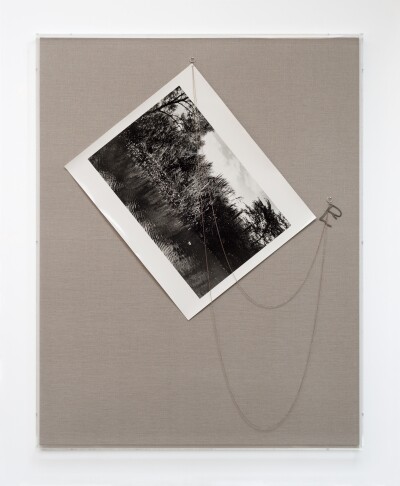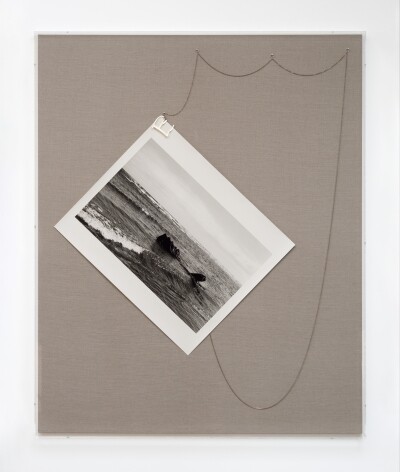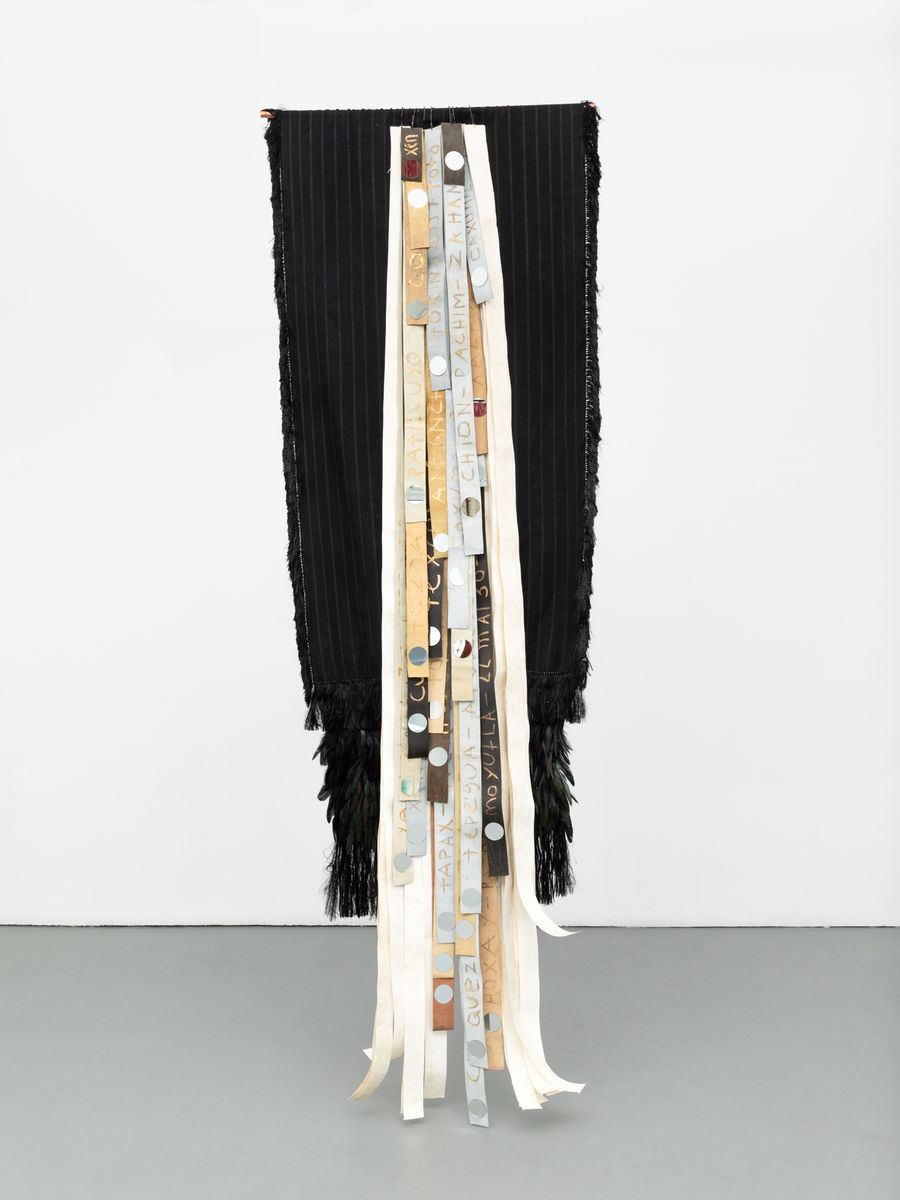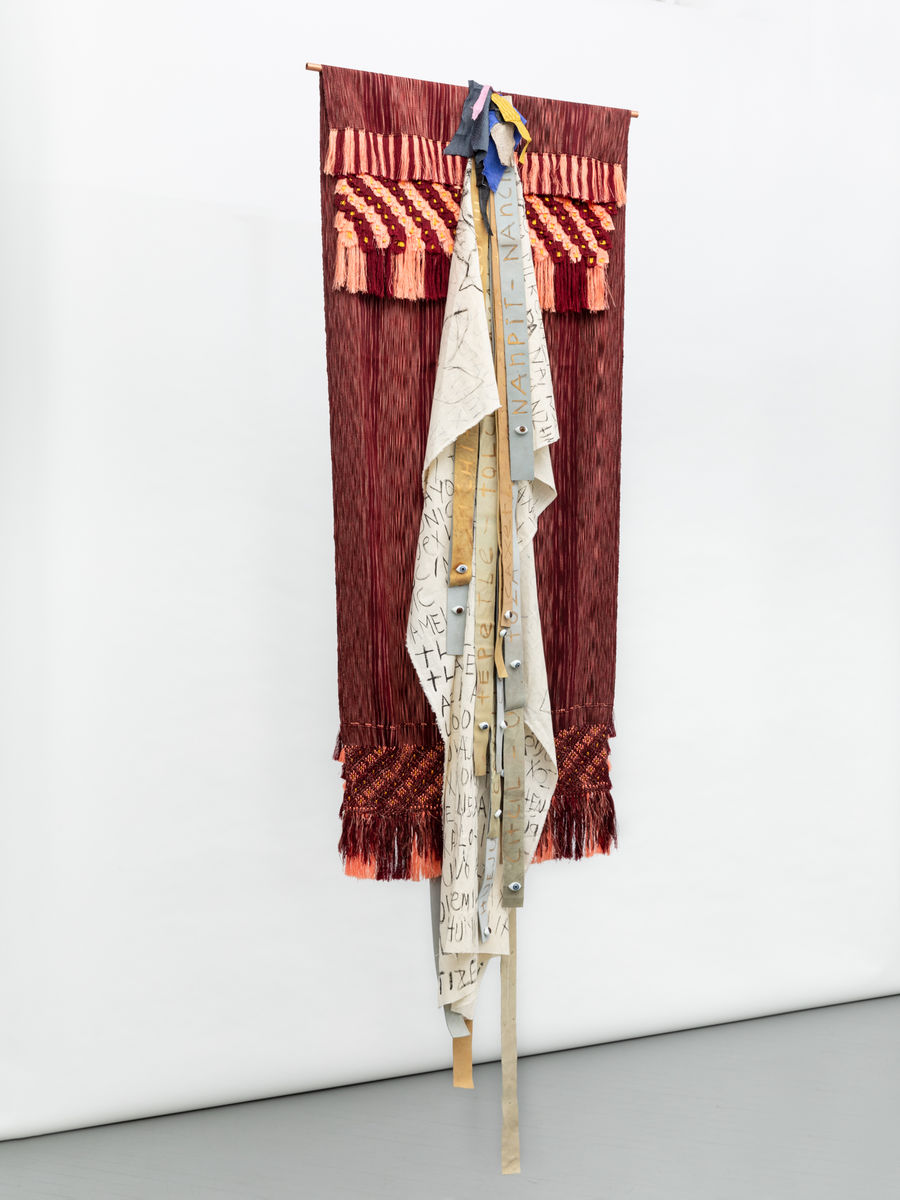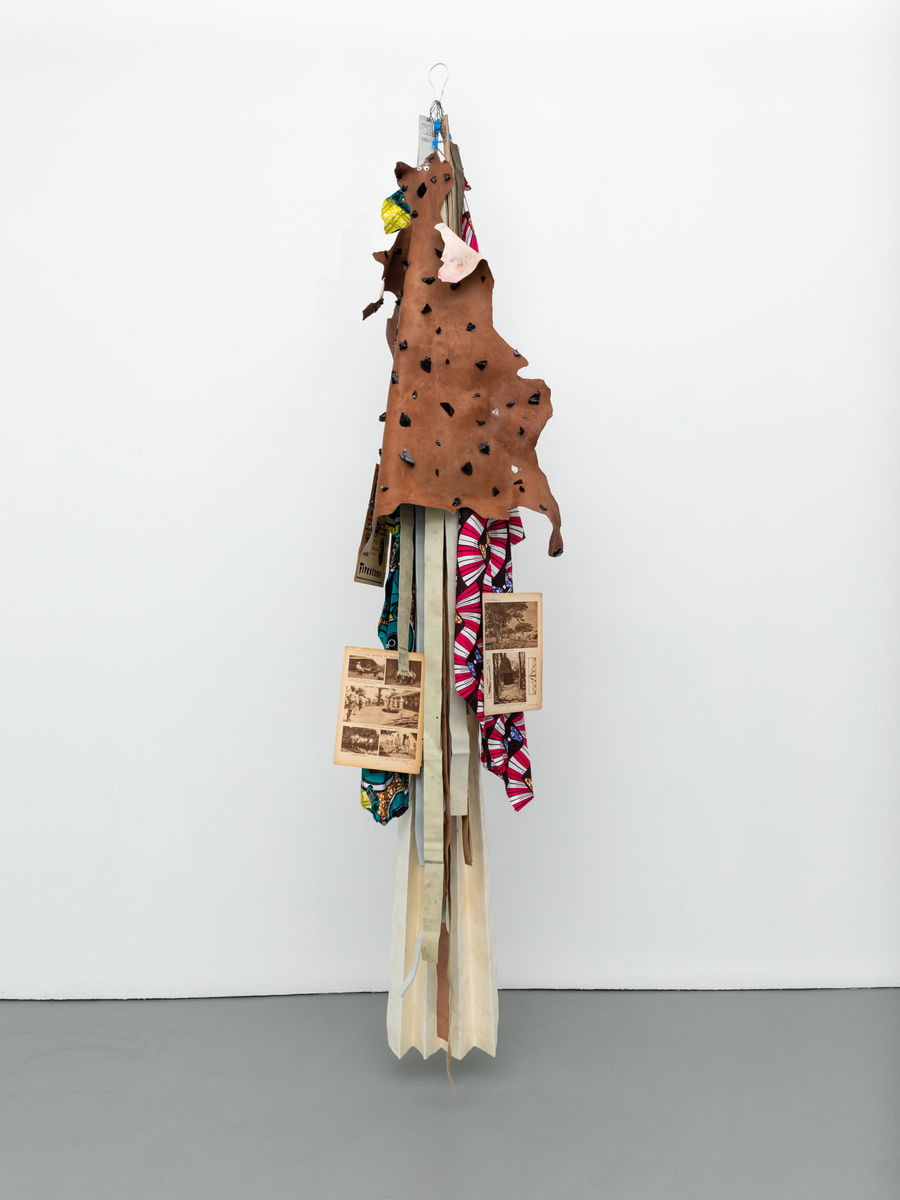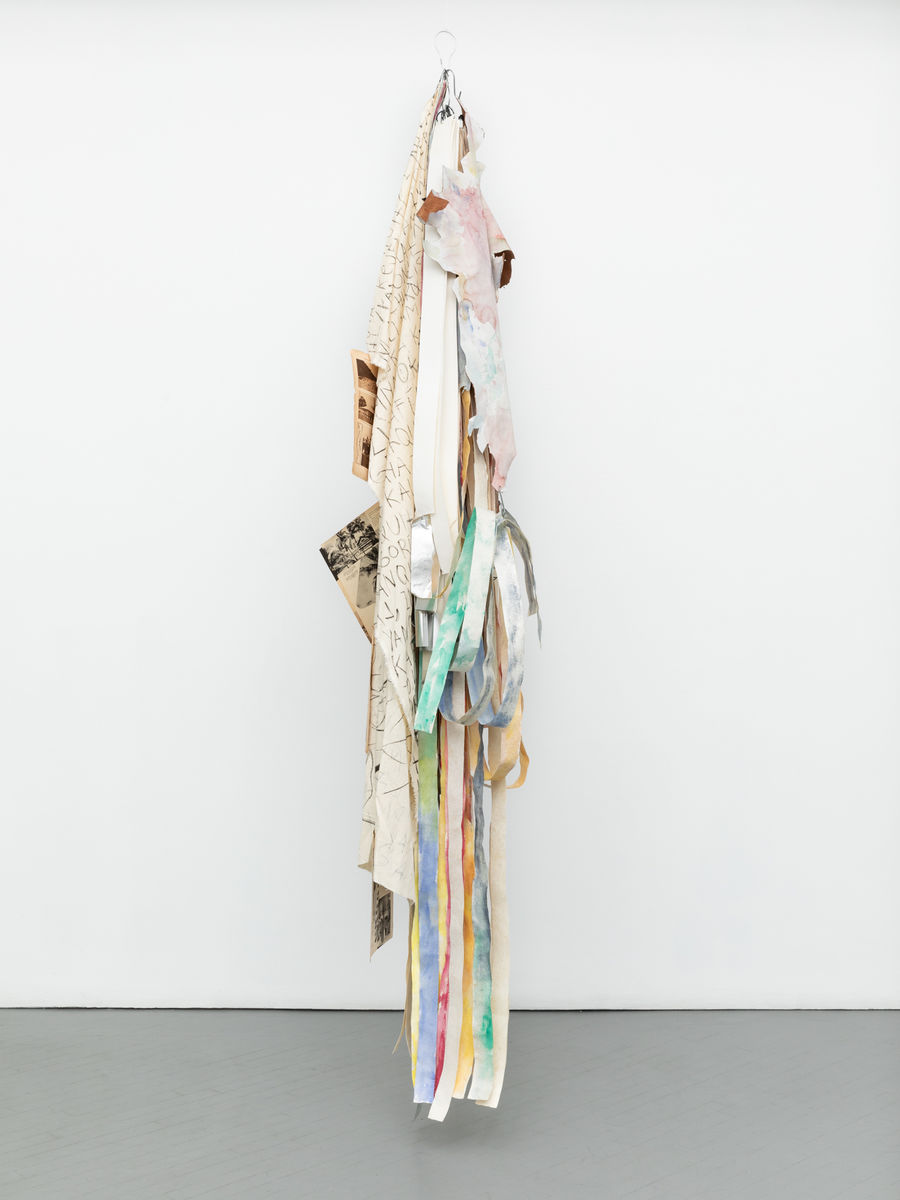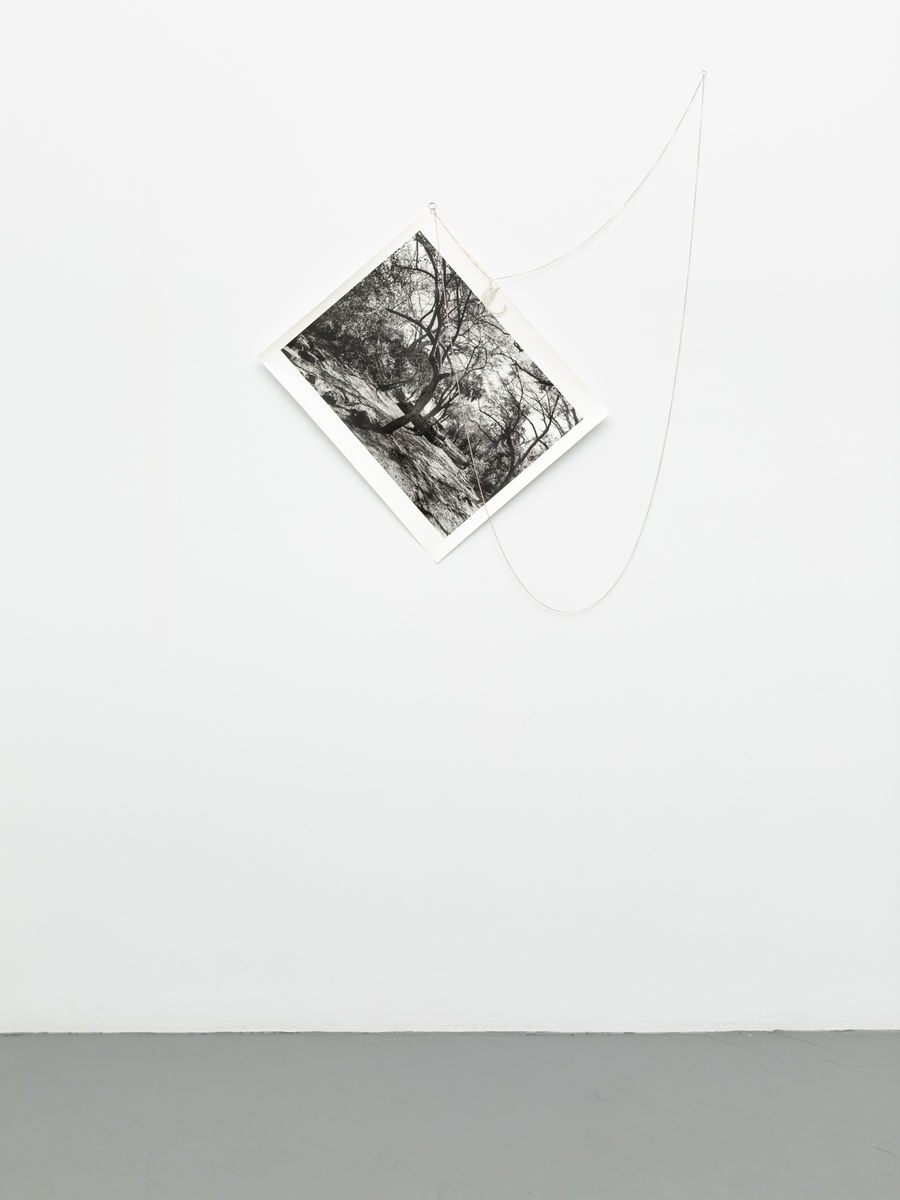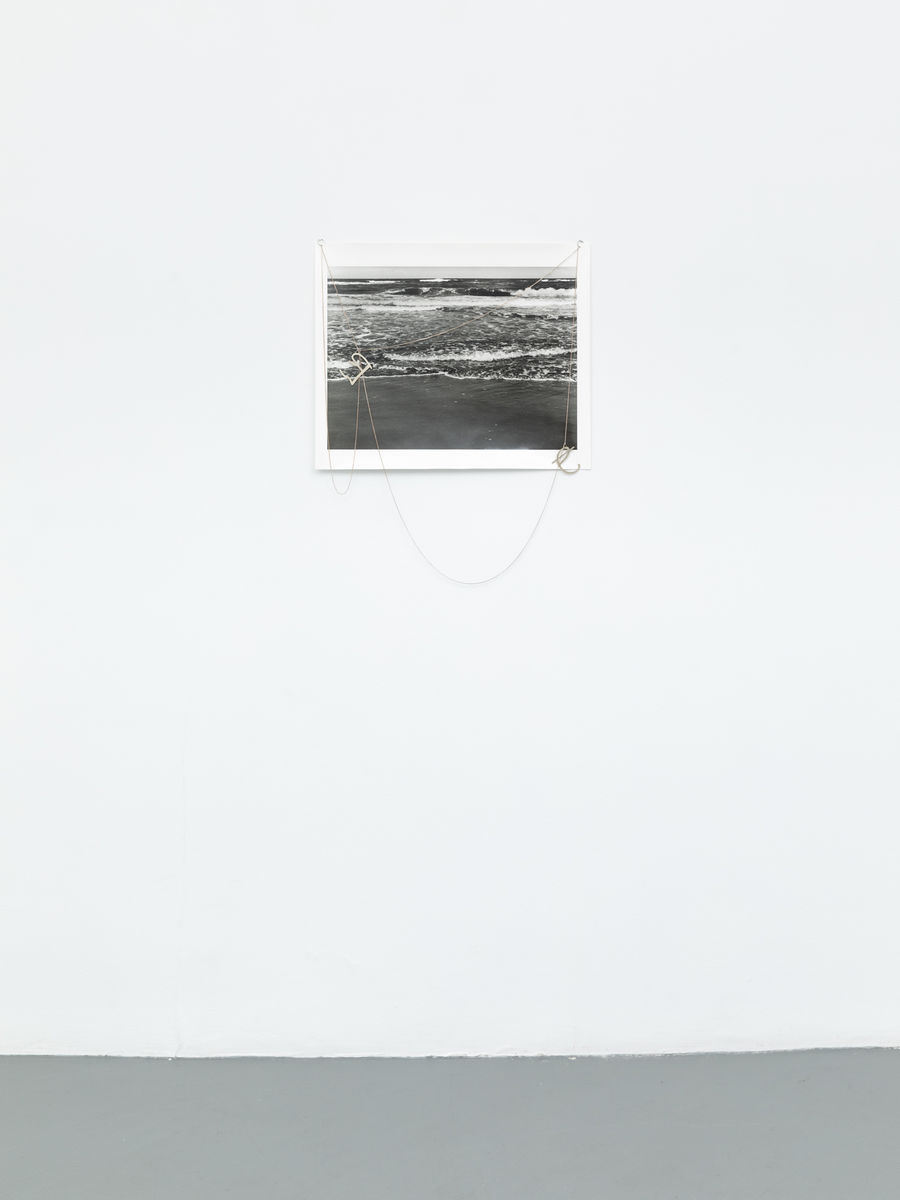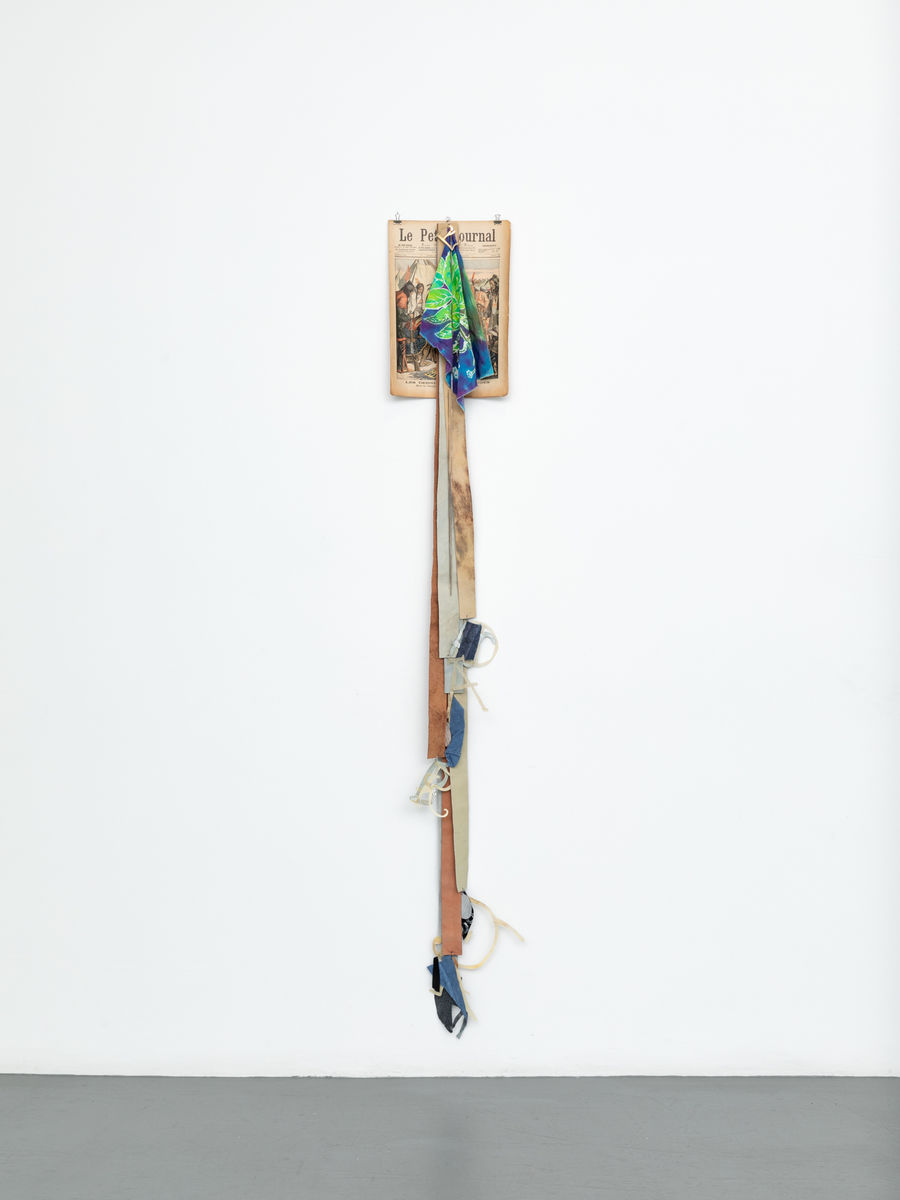PATRON is proud to present our first solo exhibition with Mexico City based artist Noé Martínez. The exhibition titled “las presences dormidas” will open on Saturday, September 12, and continue through November 21, 2020. The following interview was conducted by independent curator Ilaria Conti.
Awakened in the flesh. An interview with Noé Martínez
Noé Martínez’s practice is one rooted in research and communality. His works move through diverse chronologies and epistemologies, fluidly articulating meaning in ways that defy the colonial logic of linearity. Bridging multiple histories, Martínez reconstructs the colonial fragments he has inherited through a process rooted in precedence, as defined by Mexican thinker Rolando Vázquez:
“A relationality that exceeds in its temporality both presence as pure immanence and the transcendental as a mode of futurity. The mode of precedence cuts through the metaphysics of presence by bringing to the fore the radical openness, the radical multiplicity in time that precedes, as grounding and as always already ahead, any formation in the field of immanence, in the surface of the present. (…) In particular, it comes from listening to the notions of time prevalent in the first nations of Abya Yala, in which the past is understood as what is always ahead of us.”
The resulting synchronicity is quintessential to the artist’s decolonial strategy. When employing elements such as the Belgian colonial newspapers from the 1920s as visual proxies of the colonization of Mexico in the 16th century, the artist draws lines of continuity that don’t simply defy chronologies and geographies: they unveil the matrix of coloniality, the development across 500 years of the economic and racial infrastructure of power that shapes our present.
Precedence also points to the power of memory, which is key to Martínez’s work. Weaving transhistorical knowledge with his own family histories, he shows coloniality as the intimate ground where the social and the personal are entangled. In doing so, he sets in motion a healing process for the colonial wounds inflicted to the collective flesh, rather than the collective body. This distinction, as articulated by feminist scholar Hortense Spillers in relation to colonial histories of African descent, operates a crucial shift:
“I would make a distinction (…) between “body” and “flesh” and impose that distinction as the central one between captive and liberated subject-positions. In that sense, before the “body” there is the “flesh,” that zero degree of social conceptualization that does not escape concealment under the brush of discourse, or the reflexes of iconography. Even though the European hegemonies stole bodies - some of them female - out of West African communities in concert with the African “middleman,” we regard this human and social irreparability as high crimes against the flesh, as the person of African females and African males registered the wounding. If we think of the “flesh” as a primary narrative, then we mean its seared, divided, ripped-apartness, riveted to the ship’s hole, fallen, or “escaped” overboard.”
Noe Martínez unveils precedence in the flesh, employing a language of resonance that undoes the colonial codification of biopolitical domination and generates new pluriversal meanings. The resulting works are awakening presences (ideas?) that affirm the emancipatory power of non-dominant genealogies of knowledge.
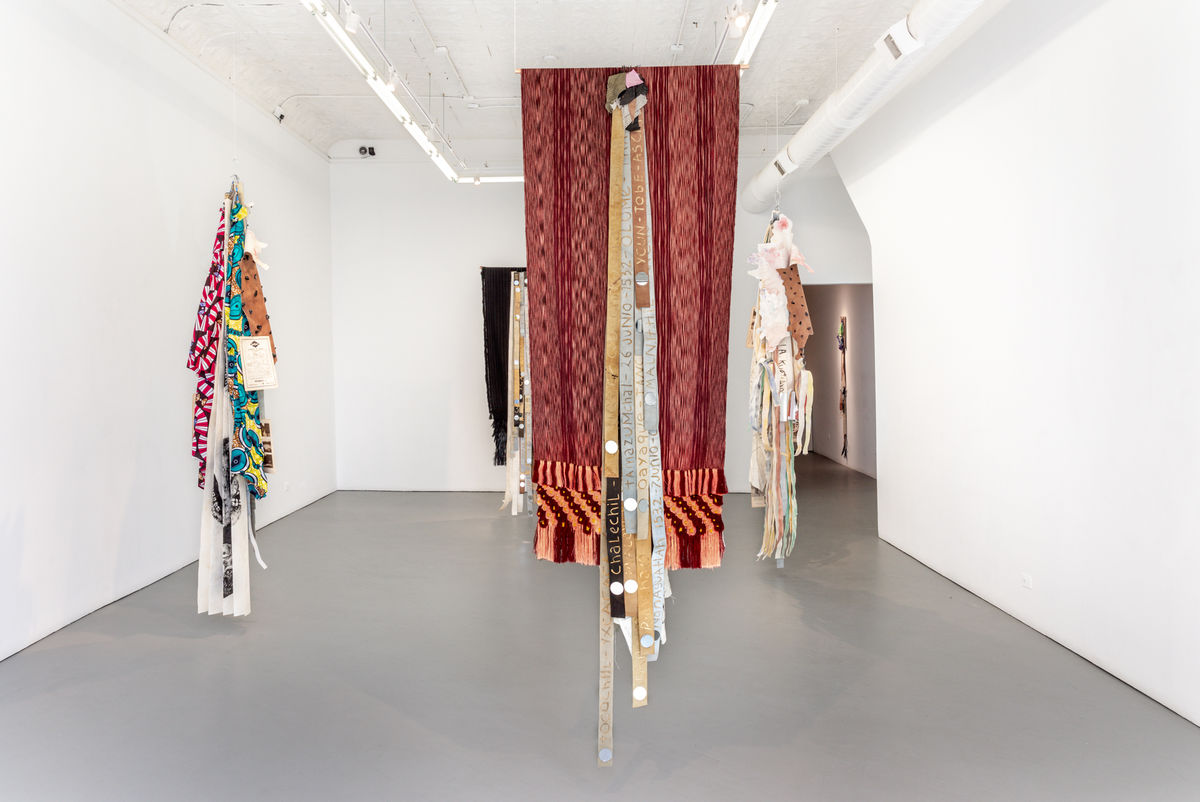
IC:
Your practice is deeply rooted in research and hinges on the connection between the historical and the personal. You work extensively with archives and official documents while also bringing in your individual and family experience, in an effort to analyze the genealogies of coloniality and shed light on its present-day ramifications.
For Las presencias dormidas you decided to operate a powerful epistemological shift, by taking as departure point a series of dreams you have had since 2012. Rather than starting from so-called documentary evidence, you treated the latent knowledge inscribed in you and emerging through an oneiric process as the basis for a research that, to this date, has unfolded across more than four years. You dignified a form of sensing that is commonly regarded as non-scientific, untrustworthy. The subsequent process you have embarked on, however, has allowed you to uncover a broad network of tangible colonial relations that, emerging from the 16th century colonization of present-day Mexico, reaches all the way to your recent artist residencies in Europe.
NM:
Es un proceso muy confrontativo porque pone en crisis mi propio trabajo. Me formé en un contexto social colonial, mi educación básica y la escuela de arte están fuertemente influenciadas por el eurocentrismo y por el arte de Norteamérica. Me di cuenta de que también mi epistemología estaba en esa misma convención, por eso decidí explorar en mi mismo las huellas del colonizador. Y justo ese colonizador no me permitía abrir un universo a partir de mi experiencia onírica.
Sin embargo, los sueños de hace unos años han sido muy vividos y habían aparecido imágenes de un lugar desconocido que veía constantemente. Era un lugar con gente de diferentes culturas, escuchaba diferentes lenguas, vi varios cuerpos maltratados bajando de un barco a un muelle para ser inspeccionados. Siempre que desperté de estas experiencias tuve una cesación de vértigo y sentí una conexión con las personas que lograba ver.
En esos años comenzaba a trabajar con una investigación del Náhuatl, la lengua materna de mi familia que ellos habían olvidado. Cuando revisé documentación virreinal de su región, me di cuenta de que una de las primeras menciones del pueblo al que pertenece su población, así como otras de los pueblos cercanos, aparecían en un censo donde la mayoría de los habitantes eran presentados como esclavos. Leí también que posteriormente hubo una querella por trafico desmedido de personas contra el Gobernador del Pánuco Nuño de Guzmán. Esta conexión entre mis sueños, mejor dicho, pesadillas, con los documentos fue devastador. Me di cuenta de que estaba viendo imágenes ancestrales de mis antepasados cuando fueron traficados. Sin embargo, no había sido consiente del potencial critico de estas experiencias y fue un proceso de descolonización primero en mi persona que me permitió posicionarme como artista.
Los documentos me abrieron un camino para darme cuenta de lo tangible de mis especulaciones y de como estas podían dar una certeza histórica, aunque fuera en fragmentos. Existe otra dimensión importante para mi aparte de la histórica, la cual es la capacidad del material para transmitir memoria. Pienso en especifico en el Archivo de Indias, cuando pude tener en las manos las actas que contabilizaban a loas esclavos. Sentí que tocando el papel podía oler, oír y sentir la temperatura de esos momentos, la cercanía de los cuerpos que estaban siendo vendidos y sus emociones. Fue devastador, experimenté un malestar físico en esos días. En las salas del archivo los historiadores trabajaban con los documentos si sentir nada de lo que yo sentía y eso me hizo entender la importancia y potencia de los materiales, de la información. Yo me involucraba con los documentos desde una perspectiva física.
It is a very confrontational process because it puts my own work in crisis. I grew up in a colonial social context, my basic education and art school are strongly influenced by Eurocentrism and by North American art. I realized that my epistemology was also in that same convention, that is why I decided to explore in myself the traces of the colonizer. And that colonizer in me did not allow me to open a universe despite my own experiences and often dreams.Ӭ
However, the dreams of a few years ago have been very vivid and images of an unknown place that I constantly saw had appeared. It was a place with people of different cultures, I listened to different languages, I saw several abused bodies coming down from a boat to a dock to be inspected. Whenever I woke up from these experiences, I had a vertigo sensation and I felt a connection with the people I could see. In those years I began to work on an investigation of Nahuatl, the mother tongue of my family that they had forgotten. When I reviewed documentation of this region, I realized that one of the first mentions of the town to which their population belongs, as well as others of the nearby towns, appeared in a census where most of the inhabitants were presented as slaves. I also read that later there was a complaint for excessive human trafficking against the Governor of Pánuco Nuño de Guzmán. This connection between my dreams, or rather nightmares, with the documents was devastating. I realized that I was seeing ancient images of my ancestors when they were trafficked. However, I had not been aware of the critical potential of these experiences and it was a process of decolonization in me first, in my person, that allowed me to position myself as an artist.
The documents opened a way for me to realize how tangible my speculations were and how they could give historical certainty, even in fragments. There is another important dimension for me apart from the historical one, which is the capacity of the material to transmit memory. I am thinking specifically of the Archive of the Indies, when I was able to have in my hands the records that counted the slaves. I felt that by touching the paper I could smell, hear and feel the temperature of those moments, the closeness of the bodies that were being sold and their emotions. It was devastating, I experienced physical discomfort in those days. In the archive rooms the historians worked with the documents without feeling anything of what I felt and that made me understand the importance and power of the materials, of the information. I was involved with the documents from a physical perspective.
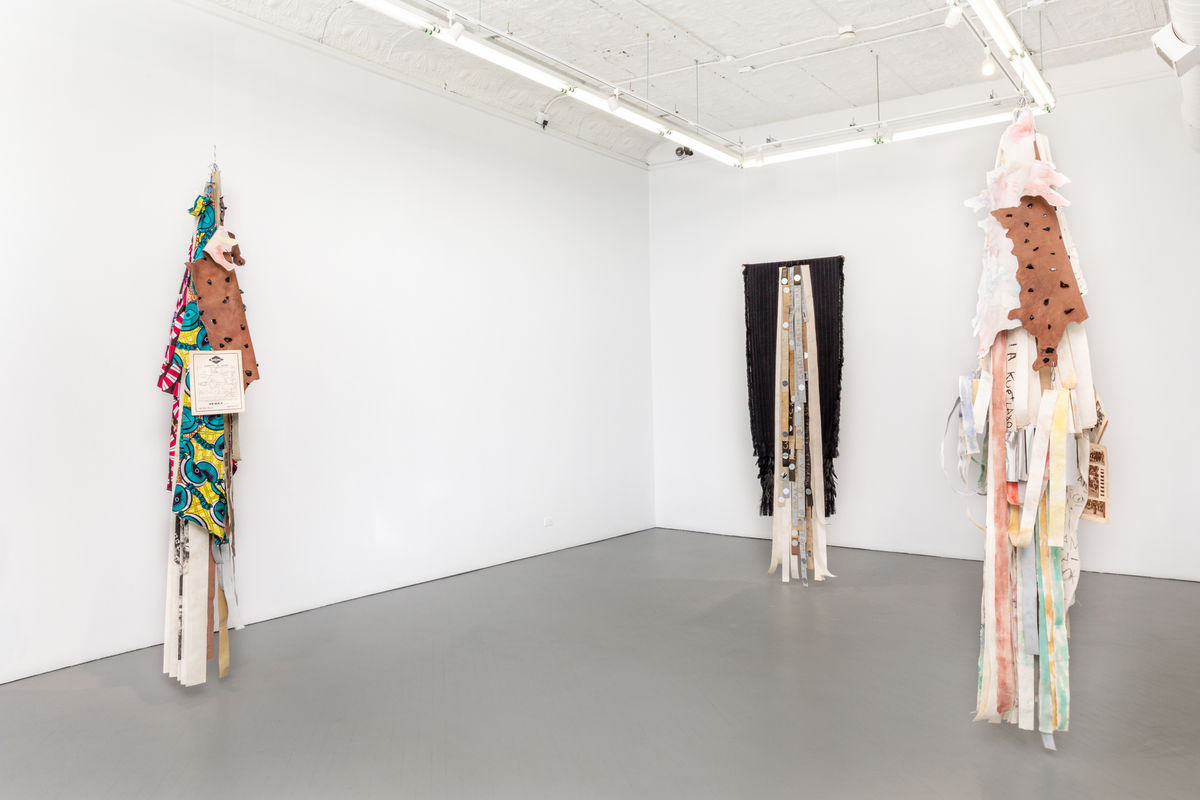
IC:
The video work Las cosas vividas antes de nacer (2020) articulates the intimate repercussions of coloniality. It follows your parents as they visit the territory where they lived in the 1980s and from which they were displaced due to a land exploitation project led by the Mexican nation-state. They come back to the site after more than three decades, embarking on a multiple process of reminiscence: of the territory they were forced to leave, the Nahua language they didn’t speak for years, and the relationships with a community they had lost contact with.
This process, divided into four video chapters, establishes a peculiar relationship with the viewer, one of proximity but also of opacity, as much of the audible conversations are fragmented. Some of them combine Nahuatl and Spanish, implicitly showing the process your family had to take on: that of reconstructing one’s native language communally, in conversation with others. The resulting chain of affections, as you define it, is complemented by the narration of Radio Imaginario, a speculative radio that recounts key facts of the Spanish conquest as if it were breaking news.
In this work, you conflate chronologies and geographies of “official” history with your own family genealogies. You address a colonial wound that has reincarnated across time, finding its latest embodiment in present-day land exploitation and systemic racism. But you configure also a new process of meaning production, one that initiates a path of political and communal healing.
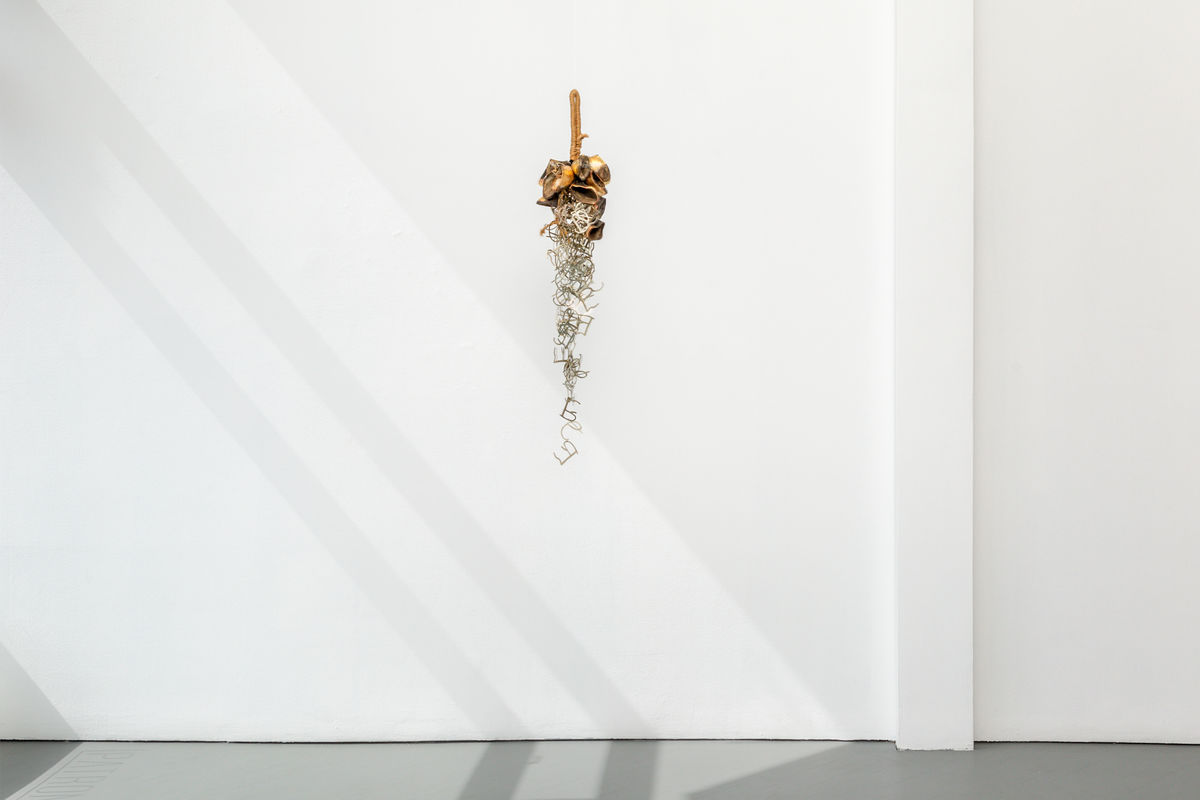
NM:
Para mi fue un proceso de muchos años. Cuando volví con mi familia a su comunidad, Calmecayo (San Luis Potosí), teníamos algunos años de no estar en esos espacios. Comencé indagando reminiscencias de su lengua, haciendo dibujos, escribiendo diarios y tomando notas de sus recuerdos. Durante unos cuatro años estuve poniendo y quitando la cámara y explorando formatos gráficos escultóricos y sonoros. El video de alguna forma lo recopila. Por ejemplo, las esculturas son usadas en una secuencia del video y Radio Imaginario recopila una serie de audio que fueron transmitidos por Radio Ibero en la Ciudad de México.
Durante el proceso me encontré con la generación que me precede y con sus heridas coloniales, que al final terminaron conectándose con mi investigación documental. Me di cuenta de la persistencia de la colonialidad desde una dimensión muy próxima, del racismo y lo doloroso que es hablar una lengua originaria en un contexto occidental. Pero al mismo tiempo veía una grieta en el sistema que posea generar experiencias de auto empoderamiento. Una de las herramientas del colonialismo es que te hace vivir en unas condiciones de violencia sin que seas consciente de ellas, hasta normalizar sus usos sociales. Durante la realización del video me di cuenta de que necesitaba un espacio de reconciliación con mi cultura, un espacio para reconocerme como un individuo que forma parte de un pueblo originario de Abya Yala. Fue un evento personal muy importante porque involucraba reconocer una mirada no occidental al arte y asumirlo en un contexto publico.
La dimensión colectiva de este proceso sucedió como una consecuencia de lo que vivía a nivel personal. Mi familia y las personas que participaron en del video lo hicieron de forma muy orgánica y participando de esa reconciliación. Pienso en la ofrenda de muertos, por ejemplo. Cuando grabamos era el Xantolo, que es la festividad de los muertos para los huastecos. Gran parte de mi familia llevaba años sin festejarlo, porque es mal visto por las iglesias evangelistas que han cobrado gran presencia en esa región. Cuando estábamos en rodaje les pedí que reconstruyeran una ofrenda y el ritual para saludar a los muertos. Cuando lo realizaron fue muy importante, porque era volver a saludar a los ancestros después de muchos años. Ese pequeño evento es liberador y recupera un espacio en la praxis espiritual que había ocupado la iglesia evangelista.
For me it was a process of many years. When I returned with my family to their community, Calmecayo (San Luis Potosí), we had not been in those spaces for some years. I began by investigating reminiscences of their language, drawing pictures, writing diaries and taking notes of their memories. For about four years I was putting on and taking off the camera and exploring sculptural and sound graphic formats. The video somehow compiles it. For example, the sculptures are used in a video sequence and Radio Imaginario compiles an audio series that were broadcast by Radio Ibero in Mexico City.
During the process I came across the generation that preceded me and their colonial wounds, which in the end ended up connecting with my documentary research. I realized the persistence of coloniality from a very close dimension, of racism and how painful it is to speak an original language in a Western context. But at the same time, he saw a crack in the system that he had generating experiences of self-empowerment. One of the tools of colonialism is that it makes you live in conditions of violence without you being aware of them, until it normalizes its social uses. During the making of the video I realized that I needed a space for reconciliation with my culture, a space to recognize myself as an individual who is part of an original town from Abya Yala. It was a very important personal event because it involved recognizing a non-Western view of art and assuming it in a public context.
The collective dimension of this process happened as a consequence of what I was experiencing on a personal level. My family and the people who participated in the video did so in a very organic way and participating in that reconciliation. I think of the offering of the dead, for example. When we recorded it was the Xantolo, which is the festival of the dead for the Huastecos. A large part of my family had not celebrated it for years, because it is frowned upon by evangelical churches that have gained a great presence in that region. When we were filming I asked them to reconstruct an offering and the ritual to greet the dead. When they did it, it was very important, because it was to greet the ancestors again after many years. This small event is liberating and recovers a space in the spiritual praxis that the evangelist church had occupied.
IC:
Awakening latent knowledge by drawing connections across different epistemological and historical dimensions is a pivotal strategy in your practice. Arboles I-IV. Las presencias dormidas materially condenses this process by articulating a syncretic visual vocabulary. The series is structured around the number four, which is central to the Huastec cosmology as it represents the four cardinal points and the inherent qualities and colors associated with each of them. Through this numerological lens you begin to create a material grammar that visualizes colonial processes historically characterized by limited visual evidence. You articulate a new ritual language based on epistemic simultaneities and dichotomies.
The works incorporate elements such as mirrors, which in the Nahua context are instruments of introspection and are used in ritual masks, alongside eyes from Spanish Catholic paraphernalia. There is a striking contrast between the opacity of the eyeballs, performing a moral surveillance aimed at self-imposed guilt, and the mirrors, serving as tools for the knowledge of the self. Similarly, you include Amate paper, used since the Aztec times to pass on knowledge ritually through codices, alongside images from L’Illustration Congolaise, a 20th century magazine of the Belgian colonial propaganda. These elements, entangled in the hanging sculptures, play with notions of intelligibility, as they seem to belong to separate colonial histories. In weaving them together, you shed light on their subtle connections and allow us to decipher their poignant syncretism. You invite to engage in a non-linear form of sensing and sense-making, as it happens in REM sleep.
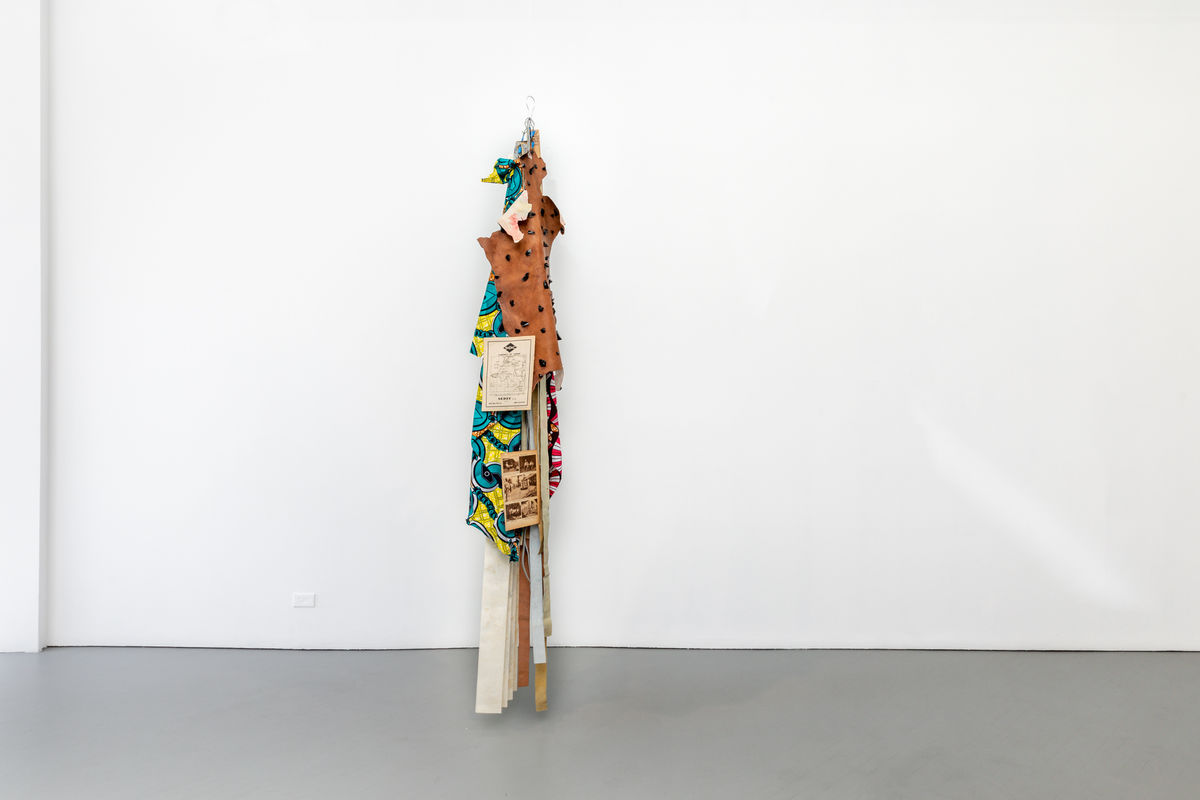
NM:
La relación con mi trabajo es muy personal, las referencias surgen de un bagaje de experiencias que van desde las lecturas de fuentes hasta el trabajo de campo. El viaje también se ha vuelto parte de mi metodología. Creo que es una cuestión de mirada, que es algo muy poderoso: si miramos o no algo lo podemos hacer emerger o desaparecer. Por eso estar explotando en diferentes direcciones es importante. Lo pienso a propósito de mi relación con las referencias, porque hay materiales de la sierra de Puebla, de Michoacán, pieles que consigo en el centro de la Ciudad de México, hasta textiles de origen africano comprados en Francia, y los periódicos coloniales que conseguí en un mercado ambulante de antigüedades en Bruselas. En este punto pongo atención a la mirada como una herramienta de empoderamiento. La fuerza del colonizador es en gran medida de como conectamos nuestra atención y la fuerza espiritual de nuestra mirada a su producción simbólica. Las convenciones pueden romperse desde allí, la realidad occidental es una convención. Los objetos se relacionan de forma intemporal, y geográficamente parecen distante. Para mi van encontrando entre ellos como testigos de la colonialidad y continuidad de este sometimiento hasta nuestros días.
En este sentido las piezas se configuran apelando a este empoderamiento de la mirada de una manera cinematográfica, como un montaje de escenas. Cuando el espectador se confronta con los arboles, cada material o imagen despierta una escena en el espectador. Busco que este proceso empodere su mirada, que pueda construir un imaginario distinto, no occidental, y que sea una herramienta para decidiera la realidad.
En particular en estas piezas los materiales son metáforas del cuerpo, colocados uno en cada punto cardinal. Son cuatro arboles y al mismo tiempo son cuerpos y ancestros. Para mi es un desafío ontológico porque estoy convencido en que las cosas tienen una existencia múltiple.
Los recortes del periódico belga en particular dan un peso a la historia de mis ancestros esclavos. Me enfrento muchas veces a una historia sin imágenes, con una escasa documentación, una profunda ceguera de la academia clásica para atender el tema. Esas imágenes hablan de la continuidad colonial y desafían las divisiones históricas de la colonización como un momento delimitado — para mi es un devenir, es un proceso y una continuidad.
The relationship with my work is very personal, the references arise from a wealth of experiences ranging from reading sources to fieldwork. The trip has also become part of my methodology. I think it is a matter of gaze, which is something very powerful: whether or not we look at something we can make it emerge or disappear. So being exploding in different directions is important. I think about it in relation to my relationship with references, because there are materials from the Puebla mountains, from Michoacán, furs that I get in the center of Mexico City, even textiles of African origin bought in France, and the colonial newspapers that I got at a traveling antiques market in Brussels. At this point I pay attention to the gaze as an empowerment tool. The force of the colonizer is largely how we connect our attention and the spiritual force of our gaze to its symbolic production. The conventions can be broken from there, the western reality is a convention. The objects are timelessly related, and geographically they seem distant. For me they find themselves among them as witnesses of the coloniality and continuity of this submission to this day.”¨
In this sense, the pieces are configured by appealing to this empowerment of the gaze in a cinematographic way, like a montage of scenes. When the viewer is confronted with the trees, each material or image awakens a scene in the viewer. I want this process to empower your gaze, to build a different, non-Western imaginary, and to be a tool to decide reality.
In particular in these pieces the materials are metaphors of the body, placed one at each cardinal point. They are four trees and at the same time they are bodies and ancestors. For me it is an ontological challenge because I am convinced that things have a multiple existence.
The Belgian newspaper clippings in particular lend weight to the story of my slave ancestors. Many times I am faced with a story without images, with little documentation, a deep blindness of the classical academy to address the issue. These images speak of colonial continuity and challenge the historical divisions of colonization as a delimited moment - for me it is a becoming, it is a process and a continuity.
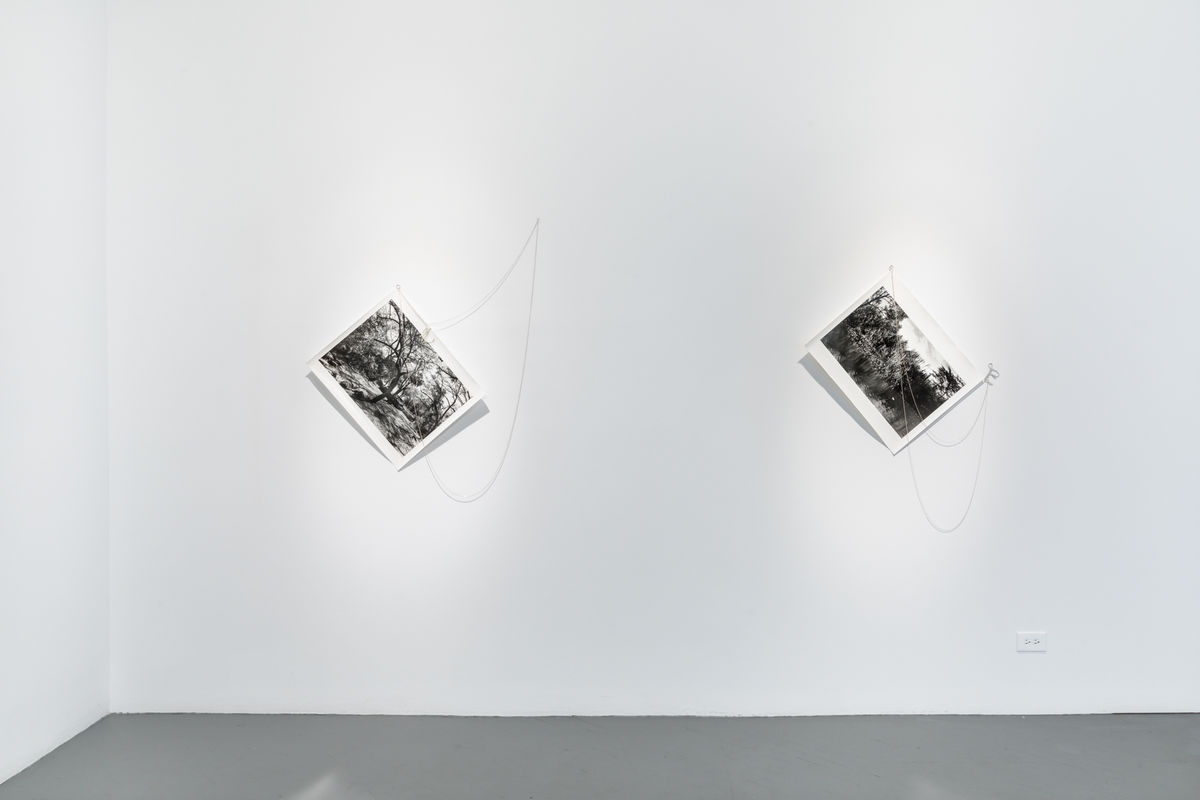
IC:
The development of knowledge through non-linear research and empathy—alongside more traditional forms of inquiry—is a way of documenting by other means that you choose to exercise extensively. It is quintessentially condensed in the series Huiatl. Las noticias del mar I-IV (2020), which explores locations where Huastec slaves boarded on ships to the Caribbean plantations. The images reconstruct the last sight of those departing and, in a reverse look, they make their absence palpable within the landscapes depicted. To capture these latent presences, you chose the analog process of gelatin silver printing, so as to exercise a photographic gaze across an extended period of time without being able to control the final image. The photographs are then restrained by silver chains and marked by the letters that were used to brand slaves: G for guerra (war, as slaves were considered war prisoners), R for rescate (rescue, as they were supposedly “rescued” through enforced evangelization).
As with Radio Imaginario in Las cosas vividas antes de nacer, you ultimately create a present-day reporting of colonial events that haven’t been broadcasted yet. This extends into the work you do with your family to craft words that are historically missing in Nahuatl. You translate “photograph” by merging the Nahua expressions for “imagination/images” (tlatlana) and “death/shadow” (miktok). The resulting term is tlatlanamiktok: “to imagine dead things,” “to make dead shadows,” which accurately describes the process of Huiatl.
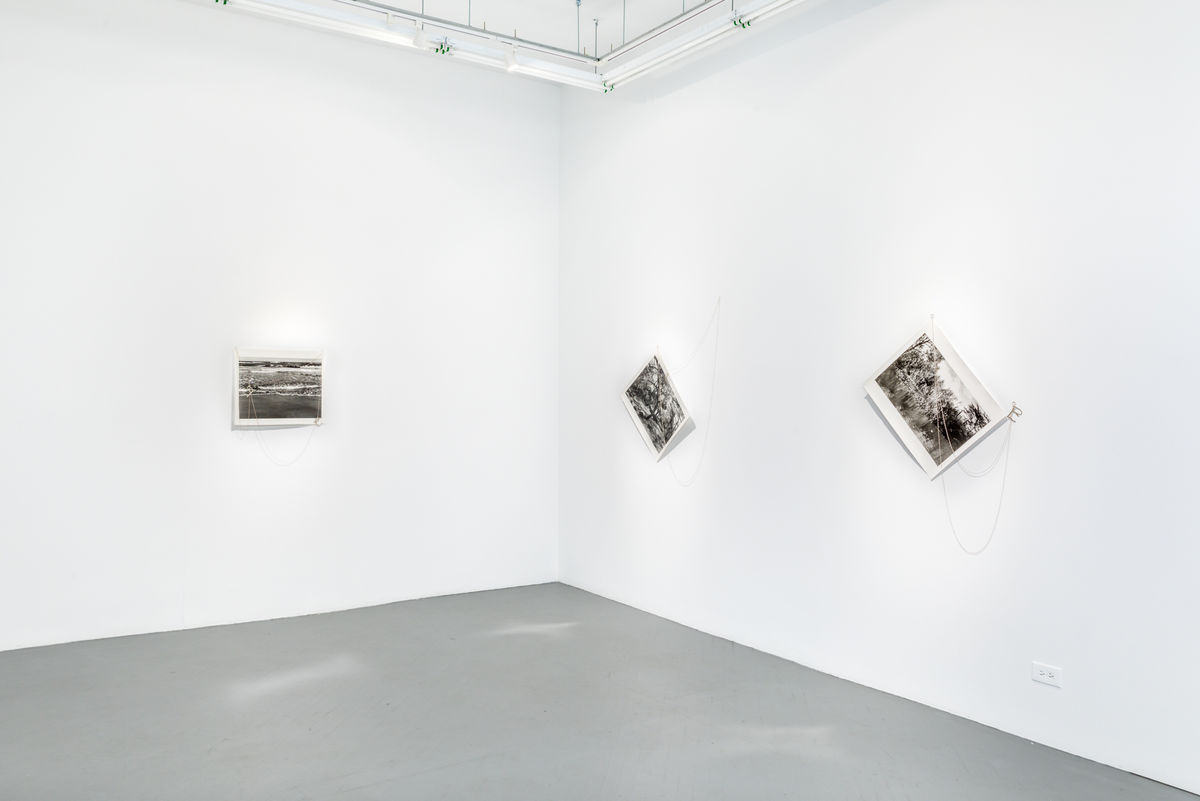
NM:
Pensé mucho en la fotografía desde la primera vez que visité la costa del golfo. Lo pensé desde la técnica e imaginé la forma de guardar esa imagen solo con la luz. Era muy importante el proceso técnico tanto como los materiales involucrados. Pensaba mucho en como para la fotografía un instante es una imagen, una abertura mínima menor a un segundo puede generarla.
Otro componente era la plata con la que se imprime la imagen, plata que sigue estando en cambio por efecto de la luz. Quería acentuar este paso del tiempo y por eso las fotografías cuelgan de un collar de palta sin marco ni protección. Es probable que la imagen cambie tonalidades y eso es importante, porqué la imagen también tendrá capas subjetivas y una espacie de “muestra” de uso.
Utilice una cámara Mamiya 120 muy vieja, con aberración de encuadre y totalmente mecánica, la cual cambia la experiencia de tomar una fotografía como habitualmente lo haríamos con una cámara digital. Era un proceso de creación de imagen casi a ciegas y tenía que esperar al laboratorio para ver el resultado. Esto me permitía meditar sobre la imagen de una forma introspectiva.
Los espacios los elegí de manera muy intuitiva, recorrí el camino de los ríos que desembocan al mar, traté de entender el paisaje como un archivo y poner atención a los detalles para encontrar las preguntas correctas. Quería interrogar al paisaje, pero tenía que saber que preguntarle: encontrar las razones del agua con sal, las razones de la caña, las razones de la arena, las razones del viento y de los vegetales, que no son mis razones.
I thought a lot about photography ever since the first time I visited the Gulf Coast. I thought about it from a technical standpoint and was fascinated by how you can save image simply with light. The technical process was very important as well as the materials involved. I thought a lot about how an a split second is an image in photography, how a minimum aperture or less than one second can generate an image.
Another component was the silver with which the image is printed, silver that is still changing due to the effect of light. I wanted to accentuate this passage of time and that is why photographs hang from a silver chain without a frame or protection. It is probable that the image will change tones in time and that is important, because the image will then also have subjective layers time and wear.
I use a very old Mamiya 120 camera, with framing aberration and totally mechanical, which changes the experience of taking a picture as we normally would with a digital camera. It was an almost blind image making process and I had to wait on the lab to see the result. This allowed me to meditate on the image in an introspective way.
I chose the spaces in a very intuitive way, I walked the path of the rivers that flow into the sea, I tried to understand the landscape as an archive and pay attention to details to find the right questions. I wanted to question the landscape, but I had to know what to ask it: to find the reasons for the salty water, the reasons for the reed, the reasons for the sand, the reasons for the wind and the vegetables, which are not my reasons.
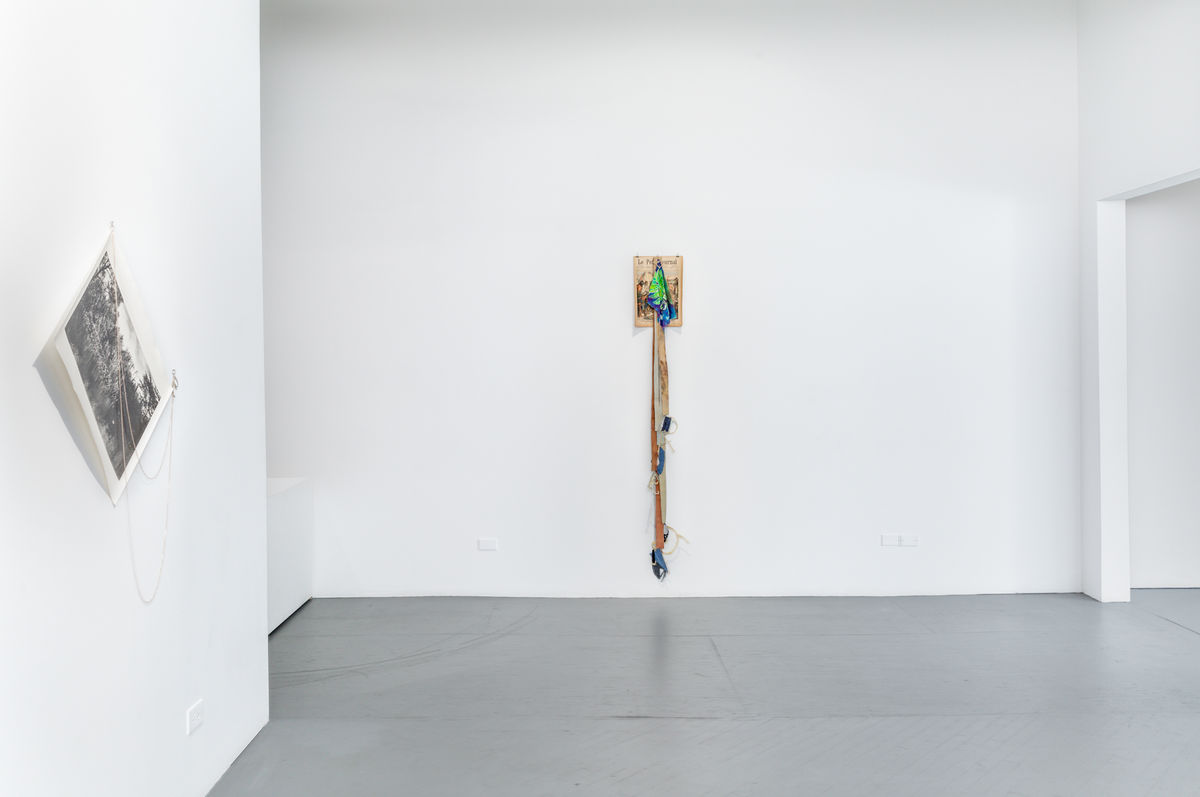
IC:
Las presencias dormidas is part of a broader artistic methodology through which you merge diverse mediums and knowledges so as to articulate a new horizon of meaning, a new cosmovisión. Much of this work is developed with networks of collaborators working across a spectrum of practices. I think for instance about Hacer cosas con palabras, a long-term project you initiated in 2019 on the native languages of Mexico. By involving multiple practitioners, you create the conditions to cultivate a spectrum of communal decolonial practices.
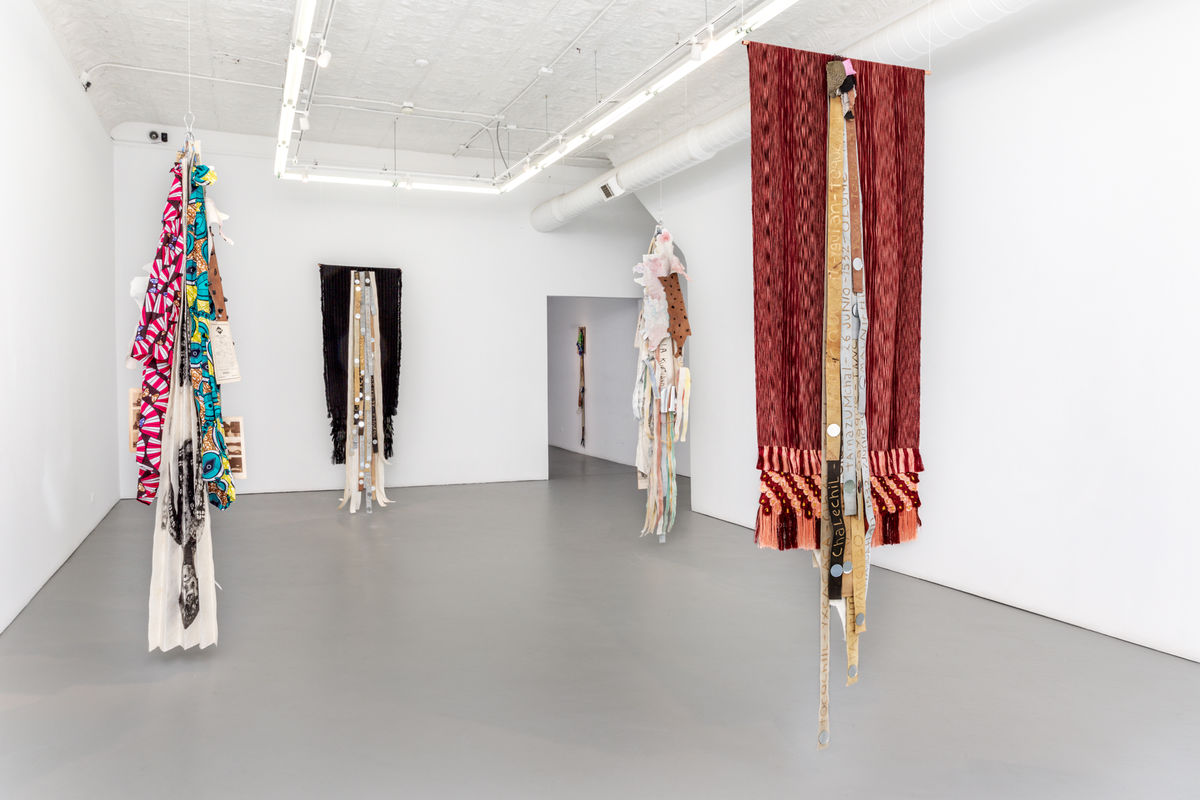
NM:
Las colaboraciones aparecen en mi trabajo desde una perspectiva de las Epistemologías del Sur, las pienso desde la ecología de saberes que propone Boaventura de Sousa Santos en su libro. Pienso en la colaboración como un espacio donde los saberes están en un fluido continuo, alimentándose unos a otros y sin una jerarquía.
En Hacer cosas con palabras quería cruzar experiencias desde la creación del universo sonoro de los pueblos originarios y hablar de la Ciudad de México como un universo plural. En este caso generé una colección de vinilos con música ritual producida entre los años sesentas y setentas. A partir de esta colección colaboré con raperos que usan su lengua originaria y realicé una serie de videos, conservatorios y unas presentaciones en conjunto en donde yo también uso mi lengua en un formato de poseía en voz alta que combinamos con el RAP.
Actualmente estoy dando seguimiento a este proyecto que se cruza con una investigación que estoy realizando con un grupo de actores desde hace unos seis meses con los que interrogamos el cuerpo como un archivo de heridas coloniales. La intención es crear a través de una serie de performances para video una reconstrucción de la caminata que hicieron mis ancestros esclavos desde el golfo de México hasta los mercados de Texcoco y Tlatelolco. Por lo regular este recorrido se hacía para usar los cuerpos huastecos como animales de carga los cuales morían después de sesenta días de cargar las mercancías.
En las próximas semanas estarán emergiendo estos performances en dialogo con rap en Nahuatl y Totonacu. El sonido se ha vuelto muy importante para mi. En el universo huasteco las entidades anímicas, los muertos o los dioses se manifiestan de forma sonora. De alguna manera para ingresar a ese mundo tienes que ver con las orejas, mirar escuchando, es otra concepción de las imágenes.
Los sonidos pueden seguirte y ser presencias. Como artista es una forma provocadora de entender las imágenes, sin embargo lo que mas me influye es desde lo personal, es una forma de reencontrarme con mi historia.
Collaborations appear in my work from a form of perspective which thinks of them as The Epistemologies of the South, I think of them from the ecology of knowledge proposed by Boaventura de Sousa Santos in his book. I think of collaboration as a space where knowledge is in a continuous fluid exchange, feeding one another and without a hierarchy.Ӭ
In Hacer cosas con palabrasI wanted to explore the creation of sound from the earliest, the original peoples and tribes and speak of Mexico City as a plural universe. In this case what I did was that I generated a vinyl collection with ritual music produced between the sixties and seventies. From this collection I collaborated with rappers who use their native language and made a series of videos, conservatories and some joint presentations where I also use my language in a pose aloud format that we combine with RAP.
I am currently following up on this project that intersects with an investigation that I have been carrying out with a group of actors for about six months with whom we interrogate the body as a file of colonial wounds. The intention is to create, through a series of video performances, a reconstruction of the walk that my slave ancestors made from the Gulf of Mexico to the markets of Texcoco and Tlatelolco. Usually this route was made to use the Huastec bodies as pack animals which died after sixty days of loading the goods.Ӭ
In the coming weeks these performances will be emerging in dialogue with rap in Nahuatl and Totonacu. Sound has become very important to me. In the Huastec universe, the soul entities, the dead or the gods are manifested in a sound way. Somehow to enter that world you have to do it with the ears, look while listening, it is another conception of images.
Sounds can follow you and be presences. As an artist it is a provocative way of understanding images, however what influences me the most is from a personal point of view, it is a way of reencountering my history.
Noé Martínez (b.1986, Michoacán, Mexico) is a visual artist and filmmaker, he is a graduate of the EMPEG (La Esmeralda) of Mexico. His work is a case study of record, emerging from his personal history making use of ethnographic tools and reviewing the history of the indigenous peoples of America. He has screened his audiovisual work in various spaces such as Museum of Contemporary Art of Chicago, Chicago, IL; 21 Biennial of Contemporary Art SESC Videobrasil, Sao Paulo, Brazil; FilmFront Chicago,Chicago, IL; Native Crossroad Film Festival Oklahoma; Morelia International Film Festival winning the Eye for Best Short Film in the Michoacana section in 2018 and at the Performance Art Week Venice, Venice Italy 2017. Solo upcoming and recent exhibitions includeRoutes and Territories, Museum of Contemporary Art Chicago, Chicago, IL;The Homeland of the Images, Orange County Museum of Art, Orange County, CA; La ultima part del cuerpo, Sala de Arte Publico Siquieros, Mexico City, Mexico. His work is in the public collections of The Museum of Contemporary Art Chicago, Chicago, IL; Foundation Kadist, San Francisco, Museo Amparo de Puebla, Puebla, MX; Instituto Alumnos 47, Mexico City, Mexico. He is a 2020 resident of the Clarice Oliveira Tavares Residency, Swiss Institute, New York, Ny.
Ilaria Conti is a curator working on research-based practices that engage with systems of power, decolonial epistemologies, and the relationship between institutional infrastructures, communal approaches, and public engagement. Most recently, she served as Research Curator at the Centre Georges Pompidou for Cosmopolis, a multiyear platform devoted to research-based art. Previously, she served as Exhibitions and Programs Director at CIMA New York, Assistant Curator of the 2016 Marrakech Biennale, and Samuel H. Kress Interpretive Fellow at the Metropolitan Museum of Art, among other positions. Curated projects include Prove di R(i)esistenza (2020), ALT(ering) + SHIFT(ing) + COMM(uning) (2020), Labor/Art/Auratic Conditions (2020), Cosmopolis #2: Rethinking the Human (2019), Cosmopolis #1.5: Enlarged Intelligence (2018), Cosmopolis #1: Collective Intelligence, (2017); 6th Marrakech Biennale: Not New Now (2016).

